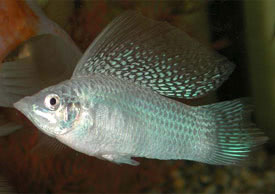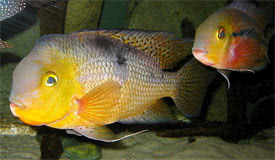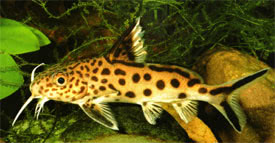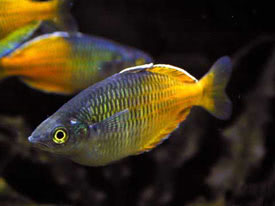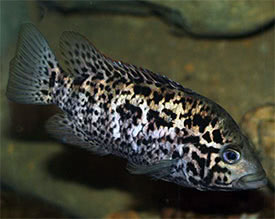
 Magyarul / Hungarian
Magyarul / Hungarian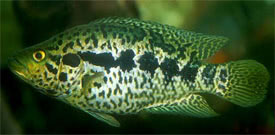
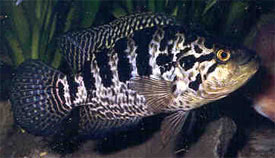
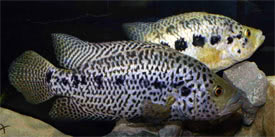
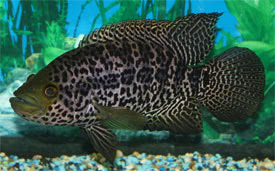
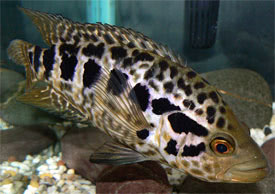

- Scientific name: Parachromis managuensis
- Synonyms: Cichlasoma managuense, Herichthys managuense, Heros managuensis, Nandopsis managuense
- Common name: Jaguar Cichlid
- Group: Cichlids
- Habitat: Central America; Honduras, Nicaragua, Costa Rica
- Size: 30-40 cm in aquaria, but can reach 60 cm in their natural habitat.
- Biotope: Inhabits in muddy lakes with turbid water and also found in clearer springs and ponds over detritus and sand bottom. Commonly found in very warm, oxygen depleted waters.
- Social behavior: Territorial and aggressive. Male can be aggressive towards any female that doesn’t want to breed.
- Diet: Carnivorous, feeding mainly on small fish and invertebrates.
- Breeding: Quite easy
- Tank: Minimum 400 litres
- Population: 1 pair for 600 litres
- Decoration: Cave-like hiding places among rocks and roots for the female. Use a substrate of small gravel or sand as the fish like to burrow.
- Temperature: 25-30 °C
- pH: 7-8.7
- Hardness: 6-18 NK°
- Lifespan: 15 years
Description: They got their scientific name from Managua, the capital city of Nicaragua. Jaguar Cichlids have been introduced into other countries like Hawaii, USA, Philippines and Singapore. A typical Central American cichlid: they are extremely attractive, but a large aquarium is required with a powerful filter to house them. The base color of this cichlid is slivery to light blue-green to light purple. The head can be yellowish or reddish. They have jaguar pattern: with various sized and shaped black spots scattered on their body and fins. Juveniles and females have several dark vertical bars that extend from the top of the back to the middle of the body. Females have several big black dots that almost form a solid horizontal line across the body. If you would like to breed Jaguar Cichlid, buy 5-6 young specimens and let them pair off, then separate the pair.
Males are more colorful and larger, and have pointed dorsal and anal fins, while females have rounder fins. Spawning can be induced with a large water change and a small raise in the water temperature. The breeding pair will clean a large flat surface for spawning, and the orange coloured eggs are laid onto this surface. The eggs will hatch in about 72 hours, and the fry become free swimming in additional 4 days. When the fry hatch the parents will move them into pits that they dig into the substrate. Jaguar Cichlids are excellent parents and will look after and defend their young for up to 6 weeks. At this point the fry are large enough (1,5-2,5 cm) to remove them to a separate tank, as the parents may start to spawn again. One of the biggest problems with breeding Jaguar Cichlid is that a breeding pair can produce up to 3000 eggs. Only those should breed this fish, who can house the large number of fry.






